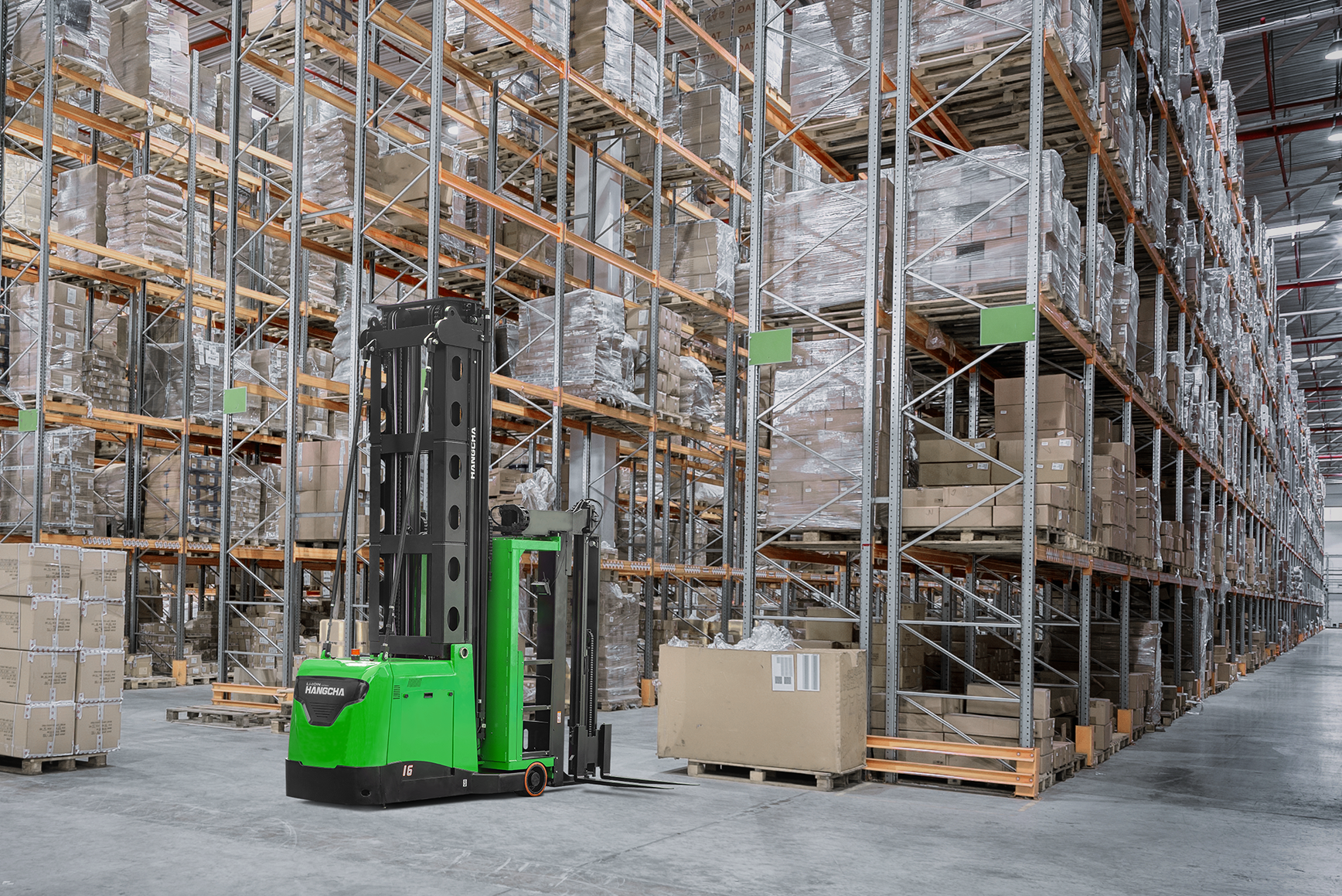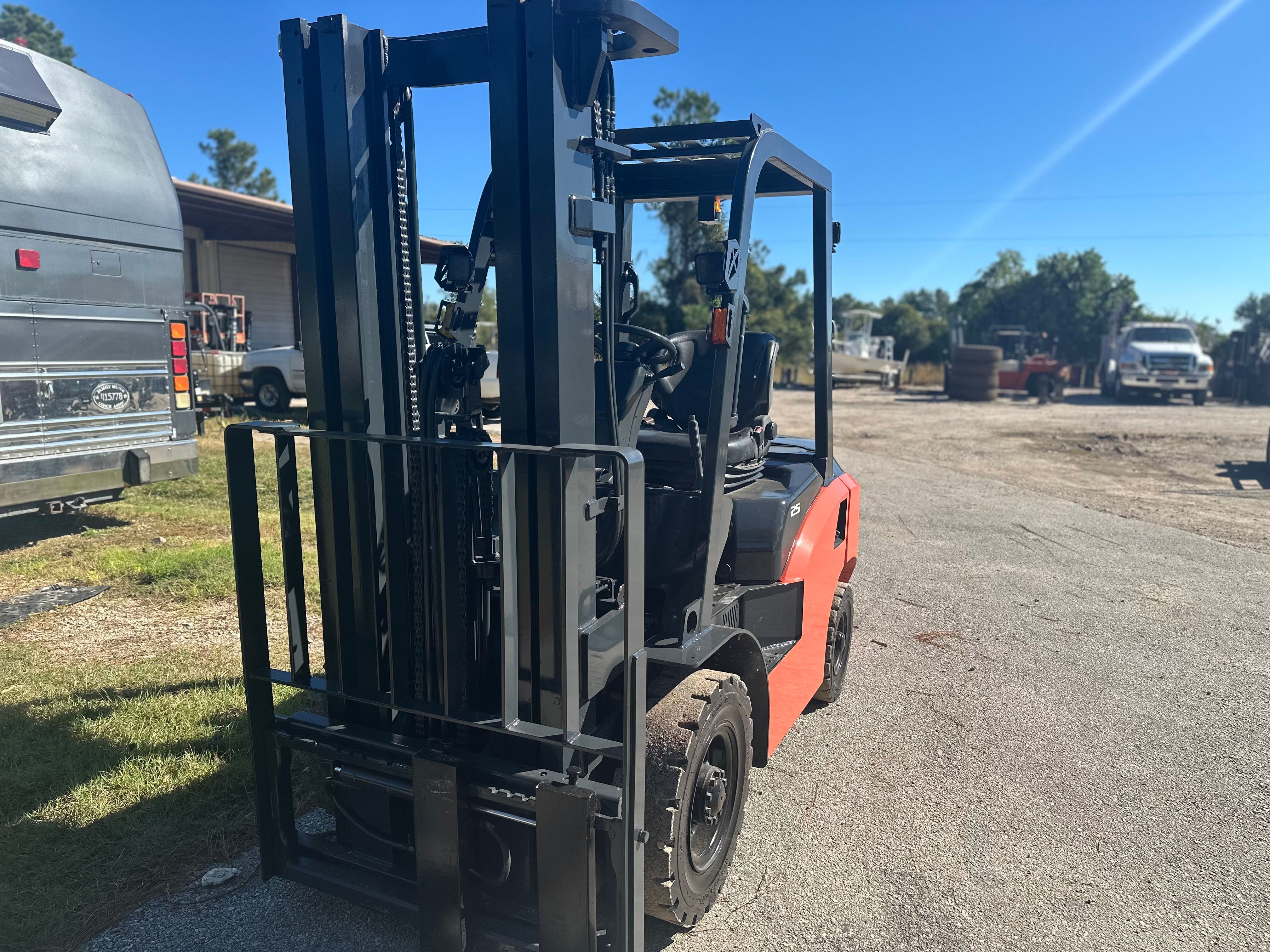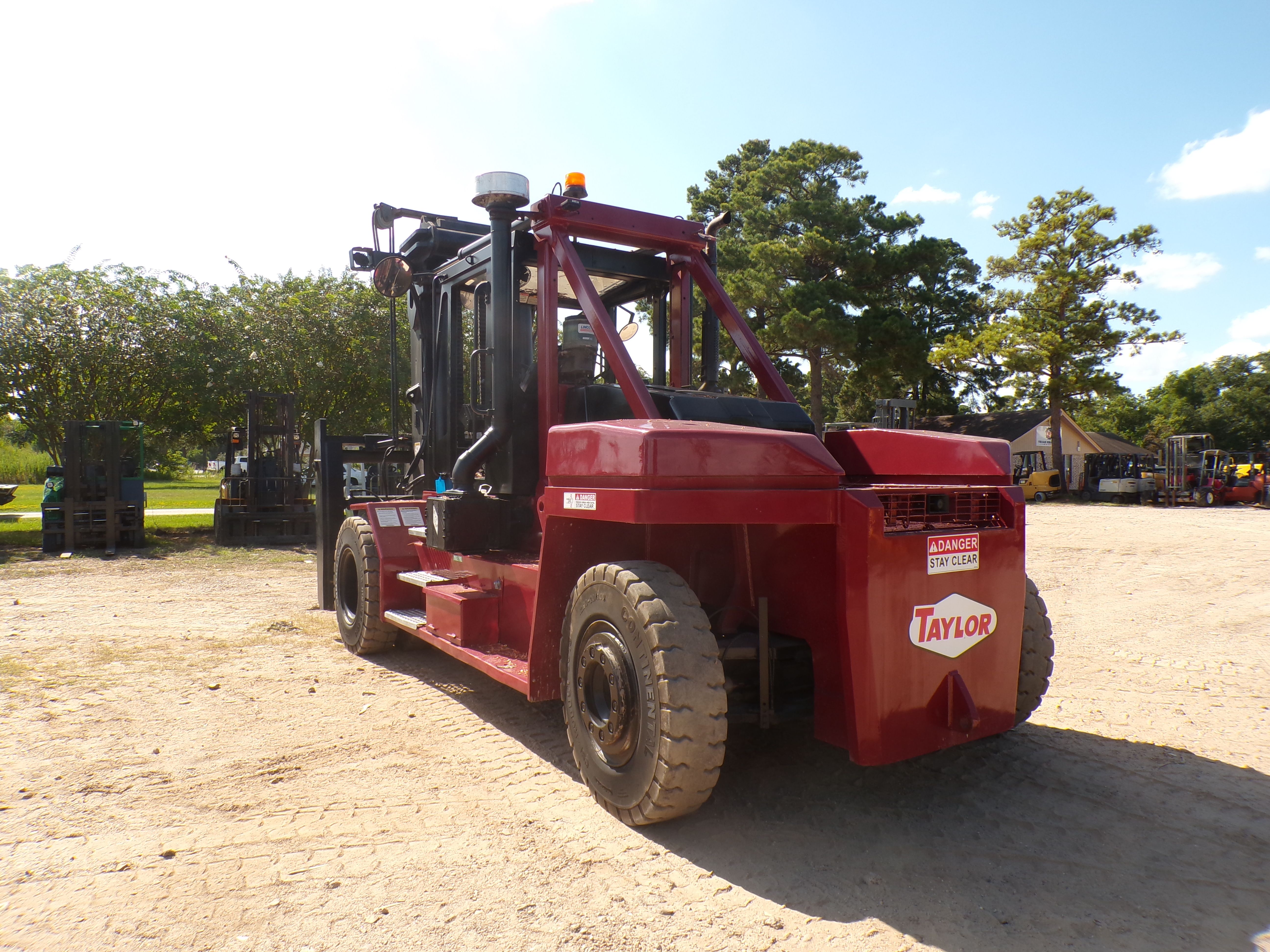Essential Forklift Safety Measures to Prevent Workplace Accidents
Forklifts are a crucial part of warehousing, construction, and industrial operations, helping businesses move materials efficiently. However, improper forklift use can lead to serious accidents, injuries, and costly downtime. Ensuring workplace safety requires proper training, routine equipment maintenance, and adherence to safety regulations.
According to OSHA (Occupational Safety and Health Administration), forklift-related incidents result in nearly 35,000 serious injuries and 85 fatalities each year in the United States. The most common causes include operator errors, tipping accidents, collisions with pedestrians, and falling loads. Businesses that prioritize safety training, regular forklift inspections, and workplace awareness programs can significantly reduce these risks.
A well-maintained forklift not only prevents unexpected breakdowns and costly repairs but also enhances workplace efficiency and operator safety. Employers must enforce strict safety protocols, provide certified forklift training, and equip workers with protective gear to create a secure work environment.
This guide covers the most effective forklift safety tips, helping businesses implement preventative measures to protect employees, reduce liability, and improve operational productivity.
Explore our Forklift Repairs, Parts, and Equipment Rentals to keep your fleet running safely and efficiently.
Common Forklift Hazards & How to Avoid Them
Operating a forklift comes with inherent risks that can lead to serious workplace injuries if not properly managed. Forklifts are involved in thousands of accidents each year, many of which result from improper handling, equipment malfunctions, and lack of safety precautions.
The most common forklift hazards include tipping incidents, pedestrian collisions, falling loads, and stability issues. Understanding these risks and implementing proper safety measures can significantly reduce workplace accidents and create a safer, more efficient work environment.
Understanding Workplace Risks
How Forklift Accidents Happen
Forklift-related incidents often occur due to operator errors, poor load handling, and lack of visibility. According to OSHA (Occupational Safety and Health Administration), forklifts contribute to approximately 34,900 serious injuries and 85 fatalities annually.
- Overloading the forklift or lifting unstable loads increases accident risks.
- Blind spots and poor workplace design contribute to pedestrian collisions.
- Insufficient operator training leads to unsafe handling and reduced reaction time.
Proactive Safety Measures
To minimize risks, businesses should focus on operator training, equipment inspections, and enforcing workplace safety policies.
- Regular forklift inspections to detect mechanical issues early.
- Clear safety signage and designated walkways to separate forklifts from pedestrians.
- Use of protective gear such as high-visibility vests and safety helmets.
Forklift Tipping and Stability Issues
Why Forklifts Tip Over
Forklift tipping is one of the most dangerous accidents, often caused by:
- Overloading beyond capacity, shifting the center of gravity.
- Making sharp turns at high speeds, increasing instability.
- Operating on uneven surfaces, causing loss of balance.
How to Prevent Forklift Tip-Overs
Maintaining proper stability ensures a safer work environment. Operators should:
- Follow the forklift’s load capacity guidelines to avoid overloading.
- Distribute weight evenly and keep loads close to the forklift’s body.
- Lower forks when traveling to stabilize the forklift’s center of gravity.
Pro Tip: Always check the forklift’s center of gravity before lifting heavy loads.
Pedestrian Safety and Collision Prevention
Forklift and Pedestrian Interaction Risks
Pedestrian accidents occur when forklifts and workers operate in the same space without clear safety measures. Lack of visibility, sudden turns, and distractions can lead to serious injuries.
Creating a Safe Workplace for Forklifts and Pedestrians
Businesses must implement strict safety protocols to prevent collisions.
- Designated pedestrian walkways with clear markings.
- Forklift warning alarms and flashing lights to alert pedestrians.
- Mandatory safety training for both operators and warehouse staff.
Pro Tip: Always use mirrors and backup alarms when maneuvering in crowded areas.
Falling Loads and Load Handling Safety
Why Loads Fall from Forklifts
Improper load handling can result in serious injuries, damaged inventory, and operational downtime. Common causes include:
- Unsecured or unbalanced loads that shift while moving.
- Incorrect stacking techniques, leading to toppling.
- Abrupt stops and sharp turns, causing materials to slide off.
How to Prevent Loads from Falling
Forklift operators must use proper load-handling techniques to ensure safety.
- Use pallet clamps or stabilizers for unstable or heavy loads.
- Stack heavy items at the bottom, placing lighter objects on top.
- Ensure forks are positioned evenly under the load before lifting.
Pro Tip: Never raise or lower loads while the forklift is in motion.
Enhancing Workplace Safety with Preventative Measures
Forklift safety requires a proactive approach, including regular inspections, proper operator training, and a well-organized work environment. Businesses that prioritize forklift safety measures experience fewer accidents, lower liability risks, and increased productivity.
For expert forklift maintenance and safety solutions, explore our Forklift Repairs, Parts, and Equipment Rentals today.
Proper Forklift Training & Certification
Forklift operation requires precision, skill, and awareness to ensure workplace safety. Proper training and certification are essential for reducing accidents, improving efficiency, and maintaining compliance with OSHA (Occupational Safety and Health Administration) regulations. Businesses that invest in certified forklift operators see fewer workplace incidents, lower equipment damage, and increased productivity.
The Importance of Operator Certification
Why Certification Matters
OSHA mandates that all forklift operators must be properly trained and certified before handling industrial equipment. Operating a forklift without certification increases the risk of accidents, fines, and liability for employers.
- Certified operators understand safety protocols, reducing workplace injuries.
- Training minimizes property and equipment damage, lowering costs.
- OSHA-compliant businesses avoid costly penalties and maintain a safer work environment.
Key Training Topics for Forklift Certification
A proper forklift certification program should cover:
- Load handling techniques to prevent tipping and falling loads.
- Emergency procedures for fire hazards, power failures, and equipment malfunctions.
- Pre-operational inspection checklists to ensure forklifts are in safe working condition.
By ensuring that operators are properly trained, businesses can reduce workplace risks and improve efficiency.
Key Elements of a Forklift Safety Training Program
Hands-On Learning for Safe Operation
Training should include practical, real-world exercises to prepare operators for actual worksite conditions. A well-structured program must emphasize:
- Pre-operational inspections to detect malfunctions before use.
- Defensive driving techniques to avoid obstacles and collisions.
- Safety protocol drills for emergency situations such as sudden power loss or tipping hazards.
On-Site vs. Classroom Training
Many companies offer in-house training programs, while others rely on third-party OSHA-certified courses.
- On-site training allows operators to practice on the same forklifts they will use daily.
- Classroom training focuses on OSHA regulations, load distribution principles, and safety protocols.
Employers must ensure that operators receive both theoretical knowledge and hands-on experience for complete certification.
Ongoing Training and Refresher Courses
How Often Should Forklift Operators Receive Refresher Training?
Forklift certification is not a one-time event. OSHA requires re-evaluation every 3 to 5 years to ensure that operators maintain their skills and adapt to new equipment or regulations.
- Operators should undergo refresher training if:
- They are involved in an accident or near-miss incident.
- A new type of forklift is introduced in the workplace.
- They have switched to a different worksite or operational environment.
Benefits of Continuous Forklift Training
- Reduces accidents by reinforcing safety protocols.
- Improves efficiency, ensuring operators stay updated on best practices.
- Helps businesses remain OSHA-compliant, avoiding legal and financial penalties.
Need expert forklift training recommendations? Contact Texas Equipment Source for guidance on OSHA-compliant certification programs and workplace safety solutions.
Safe Forklift Handling in Warehouses
Warehouse environments require precision, caution, and strategic maneuvering due to narrow aisles, high shelving, and constant pedestrian activity. Proper forklift handling minimizes accidents, reduces product damage, and ensures smooth warehouse operations.
Best Practices for Maneuvering in Tight Spaces
Navigating Aisles Safely
Warehouses often have tight spaces, requiring operators to maneuver forklifts with control and awareness. Sudden movements or improper navigation can result in collisions, tip-overs, or product damage.
Operators should:
- Maintain slow, controlled speeds in confined spaces to prevent loss of stability.
- Use horns and alarms when turning blind corners to alert nearby workers.
- Avoid sudden stops and starts to prevent forklift instability and tipping.
Pro Tip: Always keep forks low to the ground when traveling to improve visibility and prevent load imbalance.
Stacking and Unloading Safety
Preventing Load Collapses
Proper stacking prevents collapsing loads, unstable storage, and injuries. Operators must follow correct stacking techniques to maintain warehouse safety.
Forklift operators should:
- Stack pallets evenly to distribute weight properly and prevent tilting.
- Never exceed the forklift’s lifting capacity, ensuring safe operation.
- Use side shifters or fork positioners to precisely align loads.
Securing Stacked Loads
- Ensure heavier loads are placed at the bottom, with lighter items stacked on top.
- Use load backrests or pallet clamps to stabilize unsteady materials.
- Regularly inspect pallets and shelving for wear or damage.
Preventing Dock Accidents and Falls
Safe Loading Dock Practices
Loading docks present high risks due to elevated edges, moving trailers, and forklifts transitioning between levels. Forklifts that are improperly positioned can fall off dock edges, causing severe damage and injuries.
Safety measures include:
- Using wheel chocks to prevent forklift movement while loading or unloading.
- Ensuring dock plates are securely in place before crossing between a dock and a trailer.
- Avoiding sudden acceleration when driving in and out of trailers.
Pro Tip: Always verify trailer stability before entering with a forklift to avoid shifting or collapsing loads.
Essential Safety Equipment for Forklift Operators
Forklift operators must wear proper protective gear to reduce injury risks and ensure compliance with workplace safety regulations.
Personal Protective Equipment (PPE) for Forklift Operators
The Right Gear for Workplace Safety
Wearing the correct PPE minimizes risks from falling objects, collisions, and foot injuries.
Essential PPE includes:
- Hard hats to protect against falling materials.
- High-visibility vests for clear identification in busy warehouse environments.
- Steel-toed boots to safeguard feet from dropped objects.
Forklift Safety Features and Upgrades
Built-In Safety Enhancements
Modern forklifts come equipped with advanced safety features to protect both operators and nearby workers.
Key safety features include:
- Seatbelt enforcement systems to prevent ejections during tip-overs.
- Anti-tip stability controls to enhance balance when lifting heavy loads.
- Automatic speed limiters to prevent excessive speeds in confined areas.
Upgrading Forklifts for Enhanced Protection
Businesses can improve safety by retrofitting older forklifts with additional sensors, cameras, and alarm systems to prevent accidents.
Regular Forklift Maintenance for Safe Operation
Why Preventative Maintenance Matters
Poorly maintained forklifts increase the risk of malfunctions, breakdowns, and workplace injuries. Routine servicing ensures forklifts remain in optimal condition, reducing safety hazards.
Businesses must:
- Conduct daily pre-shift inspections to check for fluid leaks, tire wear, and brake issues.
- Schedule regular servicing to maintain hydraulic systems, steering controls, and lifting mechanisms.
- Replace worn-out parts to prevent unexpected failures during operation.
Need expert forklift maintenance? Explore our Forklift Repairs and Parts services today to keep your equipment in top condition.
Conclusion: Keeping Workplaces Safe with Forklift Best Practices
Ensuring forklift safety is crucial for preventing accidents, injuries, and costly downtime in workplaces. By implementing proper training, operational guidelines, and routine maintenance, businesses can create a safer and more efficient work environment.
Key safety measures include:
- Proper operator certification to reduce human errors and ensure OSHA compliance.
- Routine inspections and maintenance to prevent mechanical failures and unexpected breakdowns.
- Using personal protective equipment (PPE) to enhance operator safety and visibility.
- Investing in fleet safety features such as anti-tip technology, automatic braking systems, and collision detection sensors.
Workplace safety is a long-term commitment, requiring continuous training and equipment improvements. By prioritizing forklift safety measures, businesses can reduce liability risks, enhance productivity, and protect employees from preventable accidents.
For expert forklift safety solutions, maintenance services, and high-quality replacement parts, contact Texas Equipment Source today or explore our Forklift Repairs, Parts, and Equipment Rentals to keep your fleet running safely and efficiently.





